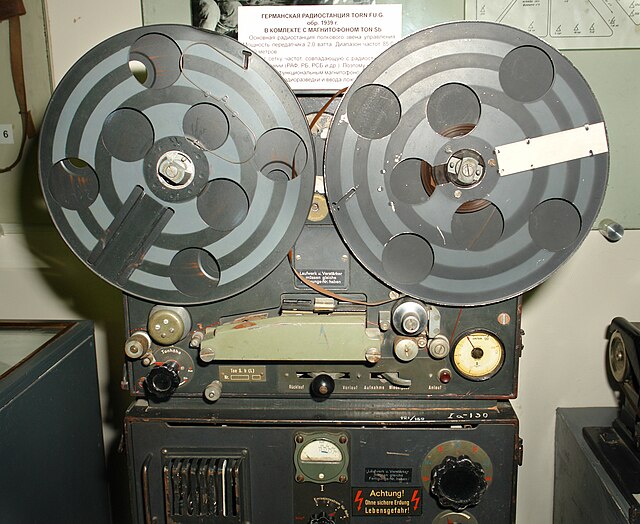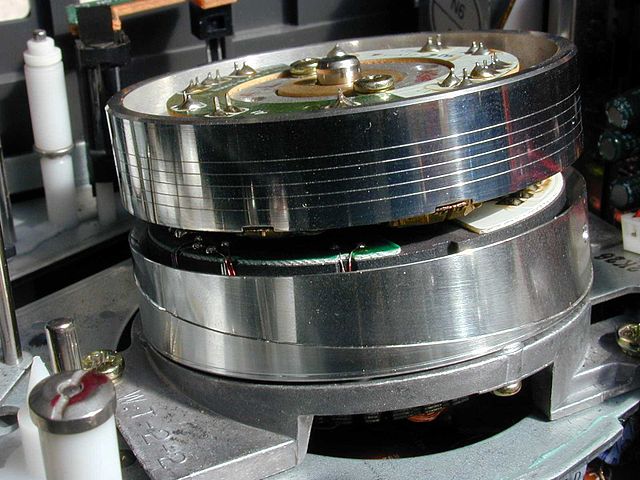Reel-to-reel audio tape recording
Reel-to-reel audio tape recording, also called open-reel recording, is magnetic tape audio recording in which the recording tape is spooled between reels. To prepare for use, the supply reel containing the tape is placed on a spindle or hub. The end of the tape is manually pulled from the reel, threaded through mechanical guides and over a tape head assembly, and attached by friction to the hub of the second, initially empty takeup reel. Reel-to-reel systems use tape that is 1⁄4, 1⁄2, 1, or 2 inches wide, which normally moves at 3+3⁄4, 7+1⁄2, 15 or 30 inches per second. Domestic consumer machines almost always used 1⁄4 inch (6.35 mm) or narrower tape and many offered slower speeds such as 1+7⁄8 inches per second (4.762 cm/s). All standard tape speeds are derived as a binary submultiple of 30 inches per second.
A reel-to-reel tape recorder (Sony TC-630), typical of a 1970s audiophile device.
Magnetophon from a German radio station in World War II.
Unitra ZK-147, a vintage Polish-made reel-to-reel tape recorder
7-inch reel of 1⁄4-inch-wide (6.4 mm) recording tape, typical of non-professional use in the 1950s–70s. Studios generally used 101⁄2 inch reels on PET film backings.
Magnetic tape is a medium for magnetic storage made of a thin, magnetizable coating on a long, narrow strip of plastic film. It was developed in Germany in 1928, based on the earlier magnetic wire recording from Denmark. Devices that use magnetic tape could with relative ease record and playback audio, visual, and binary computer data.
7-inch reel of ¼-inch-wide audio recording tape, typical of consumer use in the 1950s–70s.
Compact Cassette
A VHS helical scan head drum. Helical and transverse scans made it possible to increase the data bandwidth to the necessary point for recording video on tapes, and not just audio.
Small open reel of 9-track tape







